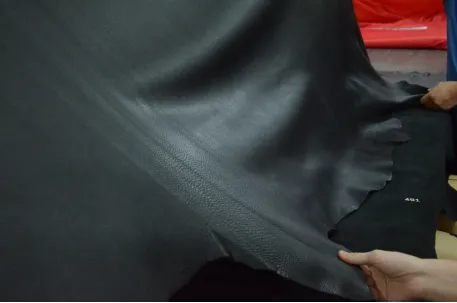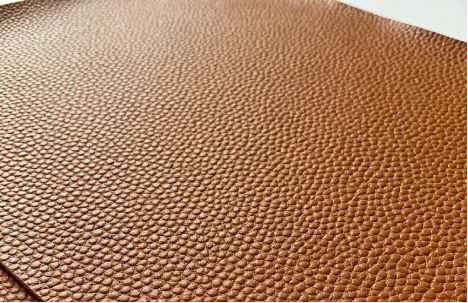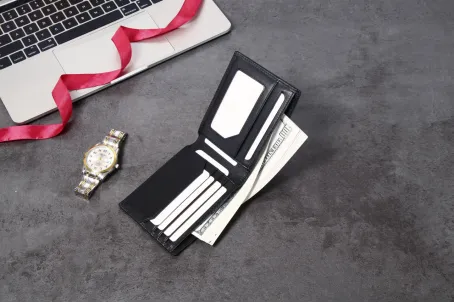When shopping for leather goods like handbags, sofas, or jackets, labels for "bonded leather" and "real leather" often cause confusion. Many assume the term "leather" guarantees quality, but bonded vs real leather differ significantly in composition, durability, and long-term value. Understanding these differences not only helps you avoid pitfalls but also ensures your investment is worthwhile. Below is a breakdown of their core distinctions.
Clarifying the core composition of both materials is the first step to understanding bonded vs real leather, which eliminates most confusion.
Real leather (often labeled "full-grain" or "top-grain") is made from animal hides (primarily cow, sheep, or goat). It undergoes tanning (vegetable or chrome-based) to preserve the hide while retaining its natural fiber structure. A key trait of real leather is uniqueness: no two real leather products have identical textures—they may bear traces of the animal’s life or slight variations in softness. This also makes real leather vs synthetic leather (100% man-made PVC/PU) distinct: real leather is breathable and won’t trap sweat (ideal for jackets or gloves), while synthetic leather often feels clammy.

Bonded leather is a composite material containing only 10–20% real leather. It is made by grinding leftover scraps from real leather production into particles, which are then mixed with adhesives, plasticizers, and dyes. This mixture is pressed onto a polyester backing, with the remaining 80–90% being synthetic materials. These synthetic components cause poor durability: adhesives age easily, and plasticizers leach out over time, making the material brittle—this is a key flaw when evaluating bonded vs real leather.

Visual and tactile cues are the most convenient ways to distinguish bonded vs real leather—no professional tools are needed, just careful observation and touch.
Real leather has a natural feel: it features fine pores and irregular grain, with no two sections of grain repeating (even on a large sofa). Bonded leather, by contrast, has a uniform, artificial texture—its "grain" is created via printing or embossing, repeating like wallpaper. It has no natural pores, feels cool, stiff, and slippery (similar to vinyl tablecloths), and shows no elasticity when pressed (it won’t stretch slightly under pressure).
Inspecting the edges of a leather item (e.g., seams or corners) reveals differences: Real leather has a dense, uniform fiber cross-section with no layers, and its edges stay smooth and durable—they only soften over years of use, never fraying or peeling. Bonded leather has three distinct layers in its cross-section: a thin printed top layer, a middle layer of leather scraps + glue, and a visible polyester backing. Its edges fray easily, and even slight bending causes cracking; peeling worsens quickly with daily use (e.g., sitting on a bonded leather chair or carrying a bonded leather bag).
Identifying real leather goes beyond visual checks—simple at-home tests can confirm it, while also clarifying real leather vs synthetic leather (which is often confused with both).
Four low-cost tests work for differentiation:
· Touch Test: Real leather feels warm, soft, and elastic (like skin); bonded leather and synthetic leather feel cool, stiff, and slippery, with no warmth.
· Smell Test: Real leather has a rich "leather scent"; bonded leather smells of chemical glue, while synthetic leather has a pungent PVC/plastic odor.
· Water Test: Place a drop of water on a hidden area (e.g., the inside of a bag). Real leather absorbs it slowly (darkening temporarily) and returns to its original color when dry; bonded leather and synthetic leather repel water (the drop rolls off).
· Grain Test: Press your finger on the surface for 2–3 seconds. Real leather’s grain shifts slightly, and the indentation fades slowly; bonded leather’s grain stays still, with no indentation.
While our focus is bonded vs real leather, it’s important to distinguish real leather vs synthetic leather: Synthetic leather (also called "vegan leather," "PU leather," or "PVC leather") is 100% plastic with no real leather content (unlike bonded leather, which contains 10–20% scraps). Synthetic leather comes in two types: PU (softer, used for bags/shoes) and PVC (stiffer, used for outdoor furniture). Both peel and fade over time, and lack real leather’s breathability, durability, and "aging well" quality—don’t be misled by claims like "bonded leather = real leather" or "synthetic leather = high-quality leather."
The difference between bonded vs real leather is more than just a name—it affects your wallet, the environment, and user experience, making it a long-term choice rather than a short-term purchase.
Real leather is an investment, not a disposable item: A well-maintained real leather sofa lasts 15–20 years. For smaller items: A real leather wallet lasts 5–7 years, while a bonded leather one needs replacing every 1–2 years—real leather saves money long-term.

Environmentally: Real leather uses byproducts from the meat industry (reducing waste) and is biodegradable; bonded leather contains harmful chemicals, is non-biodegradable, and releases microplastics in landfills. For user experience: Real leather improves with age (developing a "patina" and conforming to use habits); bonded leather ages poorly—fading, peeling, and tearing easily—quickly becoming an item you no longer want to use.
Choosing between bonded vs real leather is essentially choosing between "long-term quality" and "short-term low cost." Real leather’s natural fibers deliver durability, breathability, and unique character, while bonded leather’s synthetic components condemn it to a short, flawed lifespan. By using visual cues and at-home tests to identify real leather (and distinguish it from synthetic leather), you can avoid repeated purchases, reduce waste, and ultimately select leather goods that "last long and deliver value for money."